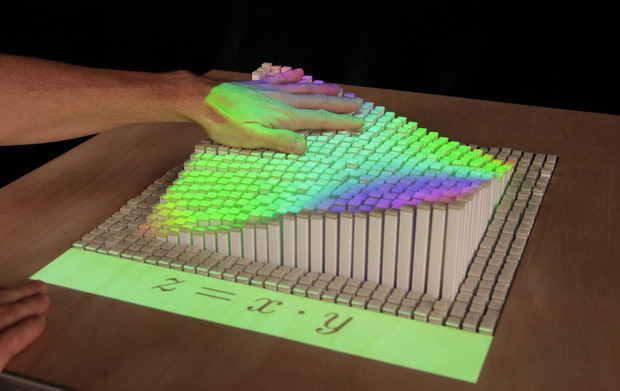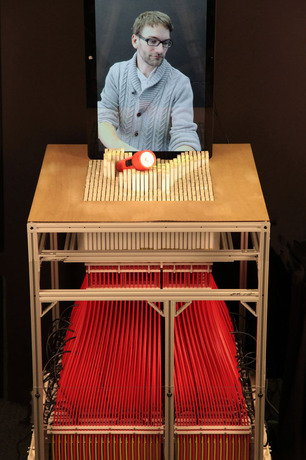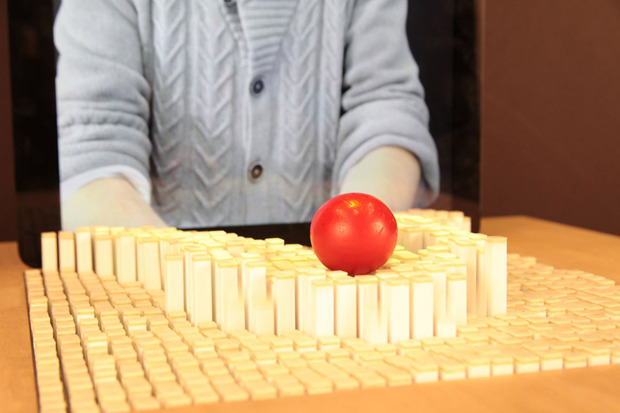Charged: inFORM, a Revolutionary Design Tool
New technology from MIT’s Media Lab presents a game-changer for designers and architects

Virtual reality has made huge strides over the past few years, but for pioneers like the scientists at the MIT Media Lab, digital simulations have begun taking actual, material shape. Formally known as the Tangible Bits project (which was presented by the lab all the way back in 1997), MIT’s Radical Atoms initiative is an ongoing program that seeks to give digital information a physical form. And, with the introduction of their latest break-through project, inFORM, it seems that the scientists and developers are well on their way to rewriting what it means to get digital.

Developed by a team that includes Sean Follmer, Daniel Leithinger, Alex Olwal, Akimitsu Hogge and Hiroshi Ishii, inFORM is the first step in realizing computer-rendered 3D objects and motions as real-life forms and movements. Made from 900 actuators connected to a grid of slender square pins, inForm uses two Microsoft Kinect cameras to capture digital renderings, which are then transformed into tangible models. Limited only by the scope of the grid, the accuracy of the technology enables a fluid interaction between the user and the digital, allowing for real-time editing through touch alone. Citing abstract sculptors like Alexander Calder and Constantin Brâncuși as inspiration, inFORM researcher and developer Sean Follmer spoke to CH regarding the project’s potential creative applications. “Basically, we were very interested in thinking of new tools for designers, and specifically the aspect of prototyping and how to improve that process,” he says.
It’s rare for such an advanced and sophisticated piece of technology to be so playful. Yet inFORM’s potential reaches far beyond the novelty of seeing one’s digitally rendered fingers toy with a real tennis ball. For designers, engineers and architects, it represents a new tool that can transform CAD models on-screen into tangible, low-res objects. More flexible and versatile than a 3D printer, the technology could enable architects and urban planners not only to see how their renderings interact with space, but also allow them to see how their structures work with the actual landscape. “With fields like urban planning, where massing and scale are important elements of the design, there is valuable contextual information that is lost when you simply print it out,” explains Follmer. “The shape-display solves that problem.”


As for the group’s next step, Follmer says the goal is to create a system that would enable two users to work on the same model while also being able to provide tactile feedback to one another. “If we think about how we collaborate in person, there are so many hand gestures and movements that go into working with someone else, but when we work remotely that begins to break down,” explains Follmer. “So we thought, ‘How can we simulate those same interactions so that people can work together effectively without being in the same room?’”

To be sure, inFORM technology is a long way off being a household object, but the principles behind the project represent a new age of interactive surfaces in which pixels are synonymous with matter and designers are no longer limited by the expenses of prototyping or the restraints of working with a global team. Follmer says, “We think of it as a tool for prototyping, but in the not-too-distant future, the technology will become a medium of its own that will enable people to interact with digital information in a more natural way.”
Images courtesy of MIT Media Lab












